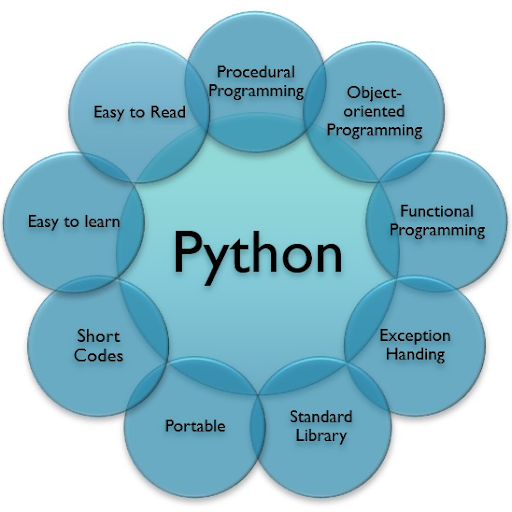Introduction to Python
What is Python?
Python is an interpreted, object-oriented, high-level programming language with dynamic semantics. Its high-level built-in data structures, combined with dynamic typing and dynamic binding, make it very attractive for Rapid Application Development and for use as a scripting or glue language to connect existing components.
Python’s simple, easy-to-learn syntax emphasizes readability and therefore reduces the cost of program maintenance.
Python supports modules and packages, which encourages program modularity and code reuse. The Python interpreter and the extensive standard library are available in source or binary form without charge for all major platforms and can be freely distributed.
Python has been growing in popularity over the last few years. The 2020 Stack Overflow Developer Survey ranked Python as the 3rd most loved and the number one most wanted technology of the year.


History
In the late 1980s, the Foundation of our protagonist was laid off. But only in 1989 was it implemented by Guido Van Rossum at CWI in Netherland. In February 1991, He published the code (labeled version 0.9.0) to alt.sources; hence, our Protagonist was born. Like all heroes, even our protagonist needed a name, So what about the name “Python”? Most people think about snakes 🐍, and even the logo depicts two snakes, but the origin of the name has its root in British humor.
Guido van Rossum, the creator of Python, wrote in 1996 about the origin of the name of his programming language: “Over six years ago, in December 1989, I was looking for a ‘hobby’ programming project that would keep me occupied during the week around Christmas. My office … would be closed, but I had a home computer and not much else on my hands. I decided to write an interpreter for the new scripting language I had been thinking about lately: a descendant of ABC that would appeal to Unix/C hackers. I choose Python as a working title for the project, being in a slightly irreverent mood (and a big fan of Monty Python’s Flying Circus).”
Python 2 and 3 have continued to be maintained and developed, with periodic release updates for both. As of this writing, the most recent versions are 2.7.15 and 3.6.5. However, an official End Of Life date of January 1, 2020, has been established for Python 2, after which it will no longer be maintained. If you are a newcomer to Python, it is recommended that you focus on Python 3. A core development team still maintains Python at the Institute, and Guido is still in charge, having been given the title of BDFL (Benevolent Dictator For Life) by the Python community.

Python is named after the comedy television show “Monty Python’s Flying Circus”. It is not named after the Python snake.

Why do we love python?
Python is one of the most loved programming languages by all developers, be it a Data-Scientist, Software engineers, Machine-Learning engineers, or even hackers who love python because of its versatility, flexibility, and object-oriented features.
Most web and mobile applications we enjoy today are due to Python’s abundant libraries, various frameworks, vast collections of modules, and file extensions. Moreover, Python is great for building micro-projects to macro enterprise web services and supporting other programming languages.

Although it’s a high-level language and can do complex tasks, Python is easy to learn and has a clean syntax. Therefore, it’s recommendable for both beginners and experienced programmers.
Just to name a few of its most common uses, Python is used in Data Mining, Data Science, AI, Machine learning, Web Development, Web Frameworks, Embedded Systems, Graphic Design applications, Gaming, Network development, Product development, Rapid Application Development, Testing, Automation, Scripting, the list goes on.
Still, You say, why Python?
- It couldn’t get simpler than Python!
- Python is highly flexible and extensible.
- Python has a library to cater to your every need.
- Python makes web development a breeze
- There’s plenty of Data Visualization
- Python comes with numerous testing frameworks
- Python is excellent for Enterprise Application Integration (EAI)
- Python is great for scripting
- Python is backed by an active community
- Python skills can command high salaries

Python Communities
Python’s community is vast and diverse and aims to grow; Python is Open.
Great people support great software, and Python is no exception. Our user base is enthusiastic and dedicated to spreading the use of the language far and wide. Our community can help support the beginner and the expert and adds to the ever-increasing open-source knowledge base.

- PyCon — Global Python community [Visit]
- Local Python User Groups [Visit]
- Python Online community [Join]
If you like what we do and want to know more about our community 👥 then please consider sharing, following, and joining it. It is completely FREE.
Also, don’t forget to show your love ❤️ by clapping 👏 for this article and let us know your views 💬 in the comment.
Join here: https://blogs.colearninglounge.com/join-us
